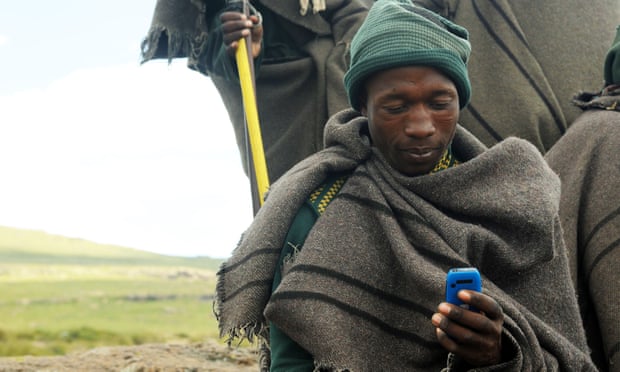Universal internet access unlikely until at least 2050, experts say
While half the world’s population now uses the internet, a desperate lack of skills and stagnant investment mean the UN’s goal of universal access, defined as 90% of people being online, may not be reached until 2050 or later, they said.
The bleak assessment highlights the dramatic digital divide that has opened up between those who take the internet and its benefits for granted and those who are sidelined because they either lack the skills to be online, cannot afford access or live in a region with no connection.
“If there is any kind of faltering in the rate of people coming online, which it appears that there is, then we’ll have a real challenge in getting 70%, 80% or 90% connected,” said Adrian Lovett, CEO of the World Wide Web Foundation, an organisation set up by the inventor of the web, Sir Tim Berners-Lee.
 |
| Students use laptops to browse the internet over a wireless network in the town of Kokrobitey, Ghana. Photograph: Alamy |
“There should be no complacency that we will somehow magically progress towards everyone being online,” Lovett added. “If you are not connected when the majority of your fellow citizens in the world are, you become marginalised in a way that could be more dire and more challenging than perhaps anything we’ve seen before.”
In December, the UN’s International Telecommunication Union (ITU) declared that global internet access had crossed a threshold with more than half of the world’s population now online. The figures reflect not only the spread of online connectivity, often in the form of mobile broadband, but whether people are able to use it – meaning they have the skills and income to get online and find material of interest there.
But the first half of the world was the easier to bring online. Connectivity swept through developed nations and other regions where high incomes, good education and dense urban centres smoothed the way.
 |
| A Lesothan shepherd uses a mobile phone in Northern Drakensberg. Photograph: Richard Wareham Fotografie Afrik/Alamy |
The second half is expected to be harder to hook up. Many places that remain offline are rural and remote where the costs of installing mobile internet towers and other infrastructure can be five times higher than in urban areas. The higher costs are exacerbated when the communities are poorer and less educated, meaning telecoms firms need substantial incentives to connect them.
“The only reason we have 50% online is because most of the developed world is so far ahead,” said Sonia Jorge, executive director of the Alliance for Affordable Internet. “It puts the developing world in a worse place, in a situation that is even more urgent.”
High costs are a major driver of the digital divide. The UN target for affordable internet is 2% of monthly income for one gigabyte of data, an amount deemed to allow basic internet access. Only the wealthiest 20% of South Africans can afford that. For the poorest 60% of South Africans, such basic access costs between 6% and 21% of their monthly earnings. In Mozambique, one of the poorest nations in the world, the internet is unaffordable for almost everyone.

